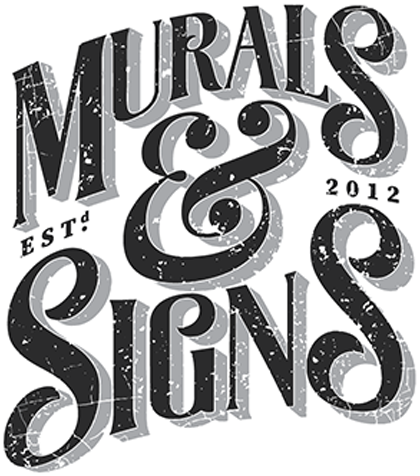In the world of commercial mural art, negotiating pricing and contracts is a crucial skill that can determine the success of a project. As businesses increasingly recognize the value of mural artwork in enhancing their spaces and branding, the need for effective negotiation strategies becomes paramount. This comprehensive guide delves into the art of negotiating pricing and contracts for commercial murals, providing insights, tips, and practical advice to help businesses secure the best deals while ensuring a successful collaboration with artists.
Understanding the Value of Commercial Murals
Before delving into negotiations, it’s essential to understand the value that commercial murals bring to businesses. Murals go beyond mere decoration; they tell stories, convey messages, and create memorable experiences for customers. By recognizing the impact of murals on brand identity and customer engagement, businesses can approach negotiations with a clear understanding of the benefits they seek to achieve.
Researching Artists and Their Work
Identifying Suitable Artists
The first step in negotiating pricing and contracts is identifying a pool of potential artists. Conduct thorough research to find artists whose style, portfolio, and expertise align with the project’s vision and goals. Look for artists who have experience in creating commercial murals, as this indicates their familiarity with the specific demands of such projects.
Evaluating Portfolios
Review the portfolios of shortlisted artists to gain a comprehensive view of their previous work. Pay attention to the diversity of styles, themes, and techniques they have employed. This evaluation will help you determine which artists have the versatility and skills necessary to bring your mural vision to life.
Gauging Reputation and Client Feedback
In addition to artistic ability, consider the reputation of the artists within the industry. Look for reviews and feedback from previous clients to gauge their professionalism, communication skills, and ability to meet deadlines. A positive reputation is a strong indicator of a successful collaboration.
Defining Project Scope and Requirements
Establishing Clear Objectives
Before entering negotiations, define the project’s objectives, including the intended message, theme, and desired impact of the mural. Clarify whether the mural will be indoors or outdoors, as this can affect the materials and techniques required. Having a clear project scope will help you communicate your expectations to potential artists.
Determining Size and Complexity
Specify the size and complexity of the mural, as these factors directly influence the time, effort, and resources required for its completion. A larger and more intricate mural may command a higher price due to the additional work involved. Providing detailed information will assist artists in providing accurate quotes.
Establishing Timelines
Set realistic timelines for the project, including deadlines for concept development, approval stages, and the final mural completion. Clearly communicating these timelines during negotiations ensures that both parties are on the same page and can plan their schedules accordingly.
Negotiating Pricing Strategies
Transparent Budget Communication
When negotiating pricing, transparency is key. Communicate your budget constraints upfront to potential artists. This allows them to tailor their proposals to fit within your financial parameters. A collaborative approach can lead to more productive negotiations.
Requesting Detailed Quotes
Ask artists to provide detailed quotes that break down the costs associated with the project. This breakdown should include expenses such as materials, labor, transportation, and any additional fees. Detailed quotes provide transparency and help you understand how the total cost is calculated.
Exploring Value-Added Services
In addition to the mural itself, inquire about any value-added services that artists can provide. This could include maintenance, touch-ups, or even additional artwork in other areas of your space. Negotiating for these extra services can enhance the overall value of the collaboration.
Contract Essentials
Legal Protection
A well-drafted contract is essential for protecting the interests of both parties involved in the project. The contract should outline project details, payment terms, intellectual property rights, and responsibilities of each party. Enlisting legal assistance to draft or review the contract can provide added security.
Intellectual Property Rights
Clearly define how intellectual property rights will be handled in the contract. Will the business have exclusive rights to the mural’s image? Will the artist retain the right to showcase the mural in their portfolio? Addressing these aspects prevents misunderstandings down the line.
Payment Terms
Specify the payment structure in the contract. This may include an initial deposit, milestone payments, and the final payment upon completion. Clear payment terms prevent payment disputes and ensure that both parties are aligned on financial expectations.
Effective Communication and Collaboration
Open Dialogue
Effective communication is the foundation of a successful collaboration. Maintain an open dialogue with the chosen artist throughout the project. Regular updates, feedback sessions, and progress reports ensure that both parties are aligned and can address any issues promptly.
Flexibility and Adaptability
Mural projects can encounter unexpected challenges, such as weather delays or design adjustments. Foster a collaborative and adaptable mindset to navigate these challenges together. Flexibility in negotiations and project execution can lead to smoother outcomes.
Mutual Respect
Respect the artist’s creative expertise and input. While it’s essential to communicate your expectations, also be open to the artist’s suggestions and insights. A collaborative approach often leads to more innovative and impactful results.
Conclusion
Negotiating pricing and contracts for commercial murals requires a combination of research, communication, and strategic planning. By understanding the value of mural art, defining project requirements, negotiating pricing transparently, drafting comprehensive contracts, and fostering effective collaboration, businesses can secure successful partnerships with artists. Ultimately, a well-executed mural not only enhances the physical space but also communicates the brand’s identity, message, and values to customers in a visually captivating manner.
